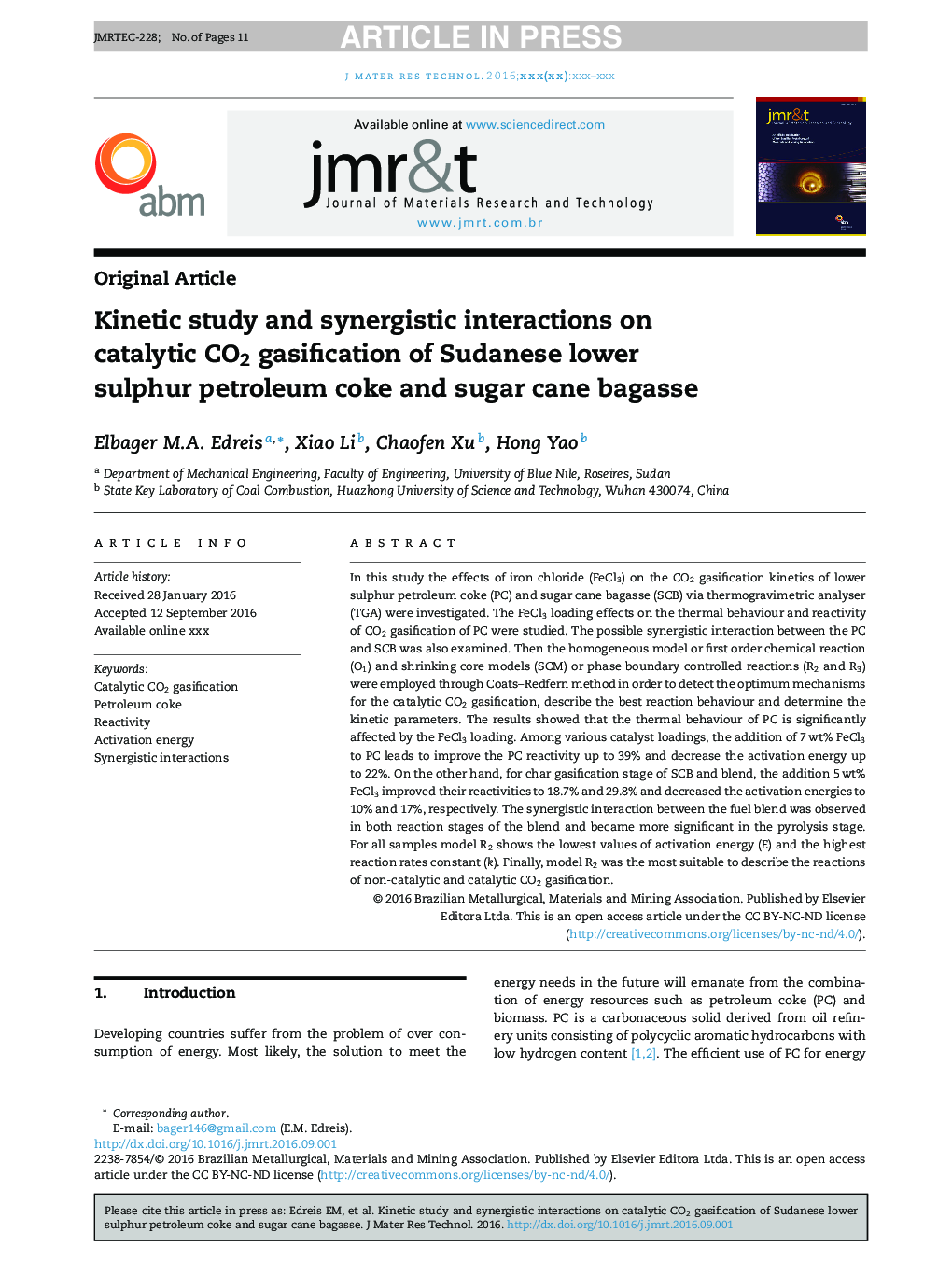| Article ID | Journal | Published Year | Pages | File Type |
|---|---|---|---|---|
| 7899450 | Journal of Materials Research and Technology | 2017 | 11 Pages |
Abstract
In this study the effects of iron chloride (FeCl3) on the CO2 gasification kinetics of lower sulphur petroleum coke (PC) and sugar cane bagasse (SCB) via thermogravimetric analyser (TGA) were investigated. The FeCl3 loading effects on the thermal behaviour and reactivity of CO2 gasification of PC were studied. The possible synergistic interaction between the PC and SCB was also examined. Then the homogeneous model or first order chemical reaction (O1) and shrinking core models (SCM) or phase boundary controlled reactions (R2 and R3) were employed through Coats-Redfern method in order to detect the optimum mechanisms for the catalytic CO2 gasification, describe the best reaction behaviour and determine the kinetic parameters. The results showed that the thermal behaviour of PC is significantly affected by the FeCl3 loading. Among various catalyst loadings, the addition of 7Â wt% FeCl3 to PC leads to improve the PC reactivity up to 39% and decrease the activation energy up to 22%. On the other hand, for char gasification stage of SCB and blend, the addition 5Â wt% FeCl3 improved their reactivities to 18.7% and 29.8% and decreased the activation energies to 10% and 17%, respectively. The synergistic interaction between the fuel blend was observed in both reaction stages of the blend and became more significant in the pyrolysis stage. For all samples model R2 shows the lowest values of activation energy (E) and the highest reaction rates constant (k). Finally, model R2 was the most suitable to describe the reactions of non-catalytic and catalytic CO2 gasification.
Related Topics
Physical Sciences and Engineering
Materials Science
Ceramics and Composites
Authors
Elbager M.A. Edreis, Xiao Li, Chaofen Xu, Hong Yao,
